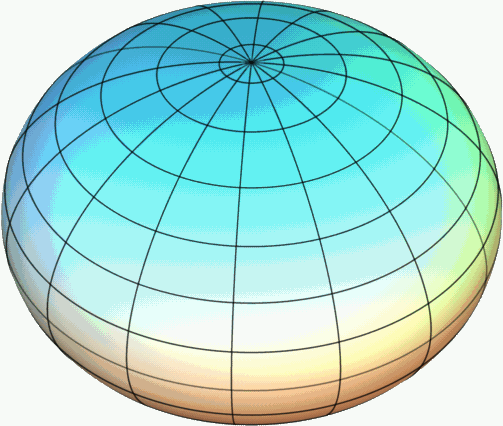Sep 03, 2012
Astronomers have recently taken more precise measurements of the Sun’s shape over several years. They found that it was rounder and less variable than they expected from theory.
If gravity and centrifugal force from its rotation were the primary influences on its shape, then the Sun should have a larger equatorial bulge. And since most solar features vary with the sunspot cycle, astronomers expected the shape would vary, too.
These observations add to a long list of disappointed expectations:
· the deficit of neutrinos.
· the variation of neutrino numbers with the sunspot cycle.
· the sunspot cycle itself and the spots’ reversing magnetic polarity.
· the hot corona above the cooler surface.
· the acceleration of the solar wind after it leaves the surface.
· the surface granulation, thought to be convection, that contradicts all that’s known about convection.
· the differential rotation, where the equator rotates faster than the poles.
Any of these observations would make a textbook example of falsification: Scientists deduce an observational result from theory, and then they look at the actual condition. If it’s not what the theory predicted, the theory is falsified. The scientists start over, examining initial assumptions and alternative ideas. Patching the theory to fit or to “explain away” the data is sloppy science.
However, reputations and salaries are at stake. Also, changing theories is expensive: textbooks would have to be rewritten, curricula changed, computers re-programmed. The incentives are for patching. But that’s expediency, not science. For many decades now, expediency has crowded out science: We live in a dark age of science, a fact obscured by technological feats. The “thermonuclear Sun” theory has been patched so much that it has disappeared beneath the stitches. In the words of Richard Rorty, it’s become “a nuisance.”
The first assumption that this new observation should question is the one Eddington made in the 1920s. He couldn’t imagine any way that the Sun could be powered externally, so he settled for an internal source. The idea of nuclear energy had just become fashionable, and questions about the details of nuclear power could be hidden along with it in the Sun’s core. Patching was excusable because the patches couldn’t be checked directly.
With the advent of the space age, it became apparent that the universe—and in particular the Sun—was composed of plasma. A century of experiments with plasma had shown it to be electrically active, and space-age data indicated that it could transmit electrical energy over stellar and even galactic distances.
Now there is a way for the Sun to be powered externally. It’s shape would be determined by electromagnetic forces, not by gravity and centrifugal force. It’s rotation would also be driven electromagnetically, like an electric motor, not inertially as a residue from a collapsed nebula (another gravity theory that never worked). If galactic currents were powering the Sun—and all stars—much like an electrical plasma discharge in a lab “gas discharge” tube, the list of anomalous observations could be explained—without patching the theory.
Theoretical extensions of lab experiments could be checked directly with space probes. So far, inadvertent results from probes have been encouraging, but for the most part the probes have not been equipped with appropriate instruments nor have their missions been designed to test the assumption of an external power source.
There is money for computer simulations, for the “video games” that circularly verify the latest patches. But the “patches” mentality has shut out every penny for challenges to the de facto orthodoxy. The uncritical reliance on mathematical deductions and computer simulations has severed the space sciences from their roots in empirical testing. They need less math, more English, and some old-fashioned empiricism.
Mel Acheson
See related video on the Thunderbolts Project YouTube Channel:













